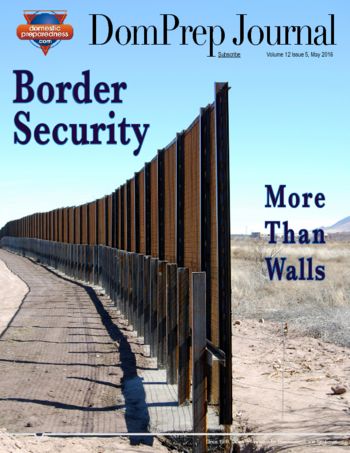
Author Archive

The Federal Emergency Management Agency’s (FEMA) Individual and Community Preparedness Division released the findings from its 2015 National Household Survey. Designed to measure household and individual preparedness and awareness, survey findings indicate specific levers that government and private sector partners can use to influence and increase overall individual and community

Critical Infrastructure Protection: DHS Has Made Progress in Enhancing Critical Infrastructure Assessments, but Additional Improvements are Needed
Domestic Preparedness
July 16, 2016
The U.S. Government Accountability Office’s prior work has shown that the Department of Homeland Security (DHS) has made progress in addressing barriers to conducting voluntary assessments, but guidance is needed for DHS’s critical infrastructure vulnerability assessment activities and to address potential duplication and gaps. http://www.gao.gov/assets/680/678344.pdf

U.S. Department of Health and Human Services Ebola Response Improvement Plan
Domestic Preparedness
July 10, 2016
In an effort to learn from the U.S. Department of Health and Human Services’ (HHS) Ebola response effort, the Secretary of HHS asked a nonprofit research organization to review the Department’s international and domestic responses to the outbreak. To guide its work in improving preparedness for subsequent public health crises,

Report of the Independent Panel on the U.S. Department of Health and Human Services (HHS) Ebola Response
Domestic Preparedness
July 9, 2016
To capture critical lessons from the Ebola epidemic of 2014-2016, the US Department of Health and Human Services (HHS) asked CNA to convene an independent panel of public health, healthcare, emergency response, and communication experts to review the Department’s international and domestic responses. http://www.phe.gov/Preparedness/responders/ebola/EbolaResponseReport/Documents/ebola-panel.pdf

Risk
Domestic Preparedness
June 30, 2016
Featured in this issue: Balancing Risk Understanding & Preparing for Catastrophes, By Catherine L. Feinman; Space Weather A Historic Shift in Emergency Preparedness, By Charles (Chuck) Manto; Preparing for Everything Under the Sun, By Joshua Sparber; Space Weather & Electrical Grid GPS, the Weakest Link, By Dana

A National Trauma Care System: Integrating Military and Civilian Trauma Systems to Achieve Zero Preventable Deaths After Injury
Domestic Preparedness
June 21, 2016
The report, A National Trauma Care System: Integrating Military and Civilian Trauma Systems to Achieve Zero Preventable Deaths After Injury, presents a vision for a national trauma care system with zero preventable deaths after injury and minimal trauma-related disability to benefit future combat operations and the civilian system. http://www.nationalacademies.org/hmd/Reports/2016/A-National-Trauma-Care-System-Integrating-Military-and-Civilian-Trauma-Systems.aspx

PHMSA 2016 Emergency Response Guidebook
Domestic Preparedness
June 9, 2016
Pipeline and Hazardous Materials Safety Administration (PHMSA) 2016 Emergency Response Guidebook provides first responders with a go-to manual to help quickly identify emergency response procedures to deal with hazmat transportation accidents during the critical first 30 minutes. http://www.phmsa.dot.gov/staticfiles/PHMSA/DownloadableFiles/Files/Hazmat/ERG2016.pdf

Public Health Service Agencies: Overview and Funding (FY2015-FY2017)
Domestic Preparedness
June 5, 2016
Within the Department of Health and Human Services, eight agencies are designated components of the U.S. Public Health Service. This report provides an overview of each agency, as well as recent trends in the funding of each. http://www.fas.org/sgp/crs/misc/R44505.pdf

Earthquake Risk and U.S. Highway Infrastructure: Frequently Asked Questions
Domestic Preparedness
May 31, 2016
Earthquakes and related events, such as soil liquefaction, landslides, tsunamis, floods, and fires, pose risks to highway infrastructure. With an interest in protecting public safety, facilitating response and recovery efforts, and minimizing economic loss and social disruption, this report addresses frequently asked questions about earthquake risk and highway system components,

Border Security
Domestic Preparedness
May 25, 2016
Featured in this issue: Border Control Challenges A Roundtable Discussion, By Robert C. Hutchinson & Catherine L. Feinman; Porous Borders & Cultivated Threats, By Richard Schoeberl; Border Control: Always On Guard, By Armin Cate; National Threats: Advice for the Next President, By Mark-Jon Nichols; Inexperience – Filling the Void,
Follow Us
Get Instant Access
Subscribe today to Domestic Preparedness and get real-world insights for safer communities.
ARchives
Follow Us
Get Instant Access
Subscribe today to Domestic Preparedness and get real-world insights for safer communities.


